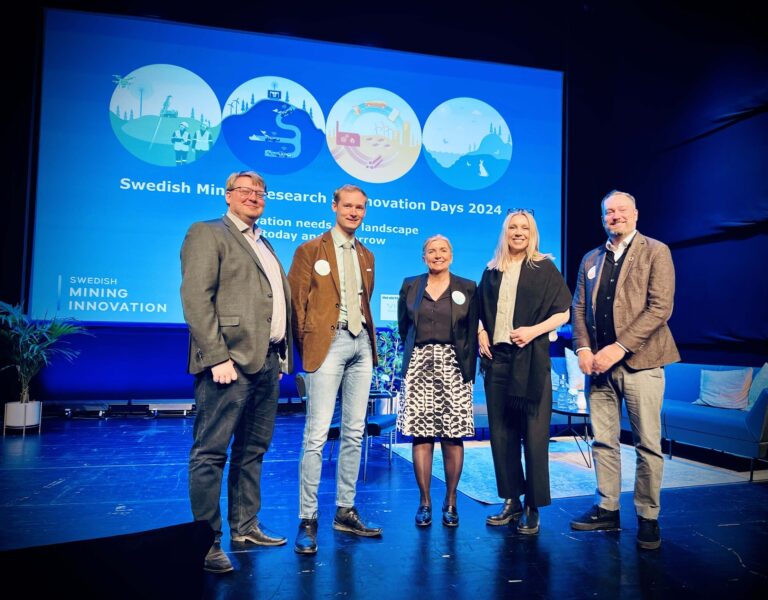A new study of mining permits in Sweden highlights important issues with relevance for the ongoing debate on permitting processes. The results, which will be presented in September 2024, aim to contribute to increased knowledge about how the permitting processes can be improved so as not to hinder innovation and development without compromising environmental requirements. The study was carried out by a working group consisting of researchers and representatives from industry and interest organizations with support from Swedish Mining Innovation, Sweden’s national innovation program for the mining and metal producing industry.
Partners in the project are LKAB, Boliden, Kaunis Iron, Svemin, Swedish Geological, Luleå University of Technology (LTU) and the Swedish Royal Institute of Technology (KTH). Lotta Lauritz, LKAB legal counsel on environment, talks about the project and what they hope the results will lead to.
How long has the project been running?
The project was preceded by a shorter strategic project, which identified a number of issues of particular importance and interest for the permitting processes. The work of the now almost completed project started at the end of 2022.
Tell us briefly about the main conclusions of the project?
The procedure with courts as the first instance of review in the major permit cases, which always include mines, has not previously been analyzed from the perspectives of efficiency or legal certainty – neither before it was introduced nor afterwards. It is also an arrangement that we do not find in other countries. In the case of the EU Water Framework Directive, which also affects all mining activities in Sweden, the Swedish implementation and decision-making processes also differ from other countries. Examples include the possibilities for exemptions and the division into relatively small water bodies, which affect the outcome of assessments in a particular trial.
How can this contribute to solving the challenges around permits?
I believe that the systematic review of the decisions to introduce the courts as a licensing body can enable a continued objective analysis of the appropriateness and consequences. Even if the courts do a good job on their own merits, I think it is necessary that we can discuss whether there are systemic errors that need to be addressed in the Swedish review process. The international outlooks made within the framework of the project are also important in this context. As regards the Water Framework Directive, there have long been concerns and demands for adaptations that can be questioned from an environmental and resource perspective, while at the same time there has been no perceived willingness on the part of the decision-making bodies to see what can and should be remedied. On a general level, I also think that we from the mining companies and the academies have benefited greatly from each other during the project work and that we have been able to meet in a constructive way from our respective perspectives. This has been the case in technical and environmental research for a long time, but is more unusual when it comes to social and legal research.
How did you go about it and what challenges did you face along the way?
As mentioned earlier, the project was preceded by a pre-project in which the issues we wanted to delve into were selected. One of the biggest challenges has been to keep political positions out of the work as far as possible. The aim has been to provide a sound and factual basis for political positions, not to engage in politics. There is no clear dividing line between legal and political issues, but I think that the various sub-projects have managed to maintain a clear boundary.
Finding the right participants in the project was an important part. LTU seemed obvious, but we also wanted experienced lawyers with an interest in the procedural issues but who could review the environmental permit procedure a little from the outside. In the end, we found KTH and the project participants from there who had what we were looking for. Swedish Geological, as a third project partner, was a good complement with previous knowledge of the international perspective that we could work from. From the mining companies’ side, we have contributed with our experiences and problem formulations. Time has been a challenge for us all. The work within the companies, including environmental assessments, is extensive and demanding, with deadlines to be met. While this makes it difficult to prioritize this kind of long-term projects, it has been important because the very same individuals who face the challenges in the permit processes are also the ones who can contribute with the insights.
What is the next step?
We hope that the ongoing governmental investigation on environmental permits will find the material interesting. The newly formed non-profit association Miljörättsföreningen Norr has expressed interest in a webinar this fall on the role of Land and Environmental Courts in the permitting process. We hope that the authors of the report will be able to participate. The work carried out has focused on a few limited issues. There are certainly more themes that could be worked on in the same way, so it is hoped that more projects with a similar approach will be developed in the future.
The three reports of the project are planned to be published in September.







